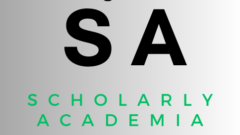COURSE:
NR507 – Advanced Pathophysiology
Case Study Scenario
Chief Complaint
J.T. is a 48-year old male who presents to the primary care clinic with fatigue, weight loss, and extreme thirst and increased appetite.
History of Present Illness
J.T. has been in his usual state of health until three weeks ago when he began experiencing symptoms of fatigue, weight loss, and extreme thirst. He reports that he would like to begin a walking program, but he feels too fatigued to walk at any point during the day. Now he is very concerned about gaining more weight since he is eating more. He reports insomnia due to having to get up and urinate greater than 4 times per night.
Past Medical History
- Hypertension
- Hyperlipidemia
- Obesity
Family History
- Both parents deceased
- Brother: Type 2 diabetes
Social History
- Denies smoking
- Denies alcohol or recreational drug use
- Landscaper
Allergies
- No Known Drug Allergies
Medications
- Lisinopril 20 mg once daily by mouth
- Atorvastatin 20 mg once daily by mouth
- Aspirin 81 mg once daily by mouth
- Multivitamin once daily by mouth
Review of Systems
- Constitutional: – fever, – chills, – weight loss.
- Neurological: denies dizziness or disorientation
- HEENT: Denies nasal congestion, rhinorrhea or sore throat.
- Chest: (-)Tachypnea. Denies cough.
- Heart: Denies chest pain, chest pressure or palpitations.
- Lymph: Denies lymph node swelling.
General Physical Exam
- Constitutional: Alert and oriented male in no acute distress
- Vital Signs: BP-136/80, T-98.6 F, P-78, RR-20
- 240 lbs., Ht. 5’8″, BMI 36.5
HEENT
- Eyes: Pupils equal, round and reactive to light and accommodation, normal conjunctiva.
- Ears: Tympanic membranes intact.
- Nose: Bilateral nasal turbinates without redness or swelling. Nares patent.
- Mouth: Oropharynx clear. No mouth lesions. Teeth present and intact; Oral mucous membranes and lips dry.
Neck/Lymph Nodes
- Neck supple without JVD.
- No lymphadenopathy, masses or carotid bruits.
Lungs
- Bilateral breath sounds clear throughout lung fields. Breathing quality deep with fruity breath odor
Heart
- S1 and S2 regular rate and rhythm; – tachycardia; no rubs or murmurs.
Integumentary System
- Skin warm, dry; Nail beds pink without clubbing.
Labs
| Test | Patient’s Result | Reference |
| Glucose (fasting) | 132 | 60-120 mg/dL |
| BUN | 20 | 7-24 mg/dL |
| Creatinine | 0.8 | 0.7-1.4 mg/dL |
| Sodium | 141 | 135-145 mEq/L |
| Sodium | 141 | 135-145 mEq/L |
| Chloride | 97 | 95-105 mEq/L |
| HCO3 | 24 | 22-28 mEq/L |
| A1C | 7.2 | |
| Urinalysis
Protein Glucose Ketones |
Negative Positive Negative |
|
| Oral glucose tolerance test (OGTT) | 220 mg/dL |
J.T. is diagnosed with diabetes. Review all information provided in the case to answer the following questions.
Case Study Questions
Pathophysiology & Clinical Findings of the Disease
- Review the lab findings and decide if the diagnosis is Type 2 or Type 1 Diabetes Mellitus.
- Explain the pathophysiology associated with your chosen diagnosis
- Identify at least three subjective findings from the case which support the chosen diagnosis.
- Identify at least three objective findings from the case which support the chosen diagnosis.
Management of the Disease
*Utilize the required Clinical Practice Guideline (CPG) to support your treatment recommendations.
- Identify two (2) “Evidence A” recommended medication classes for the treatment of this condition and provide an example (drug name) for each.
- Describe the mechanism of action for each of the medication classes identified above.
- Identify two (2) “Evidence A” recommended non-pharmacological treatment options for this patient.
- Utilizes the required Clinical Practice Guideline (CPG) to support the chosen treatment recommendations
